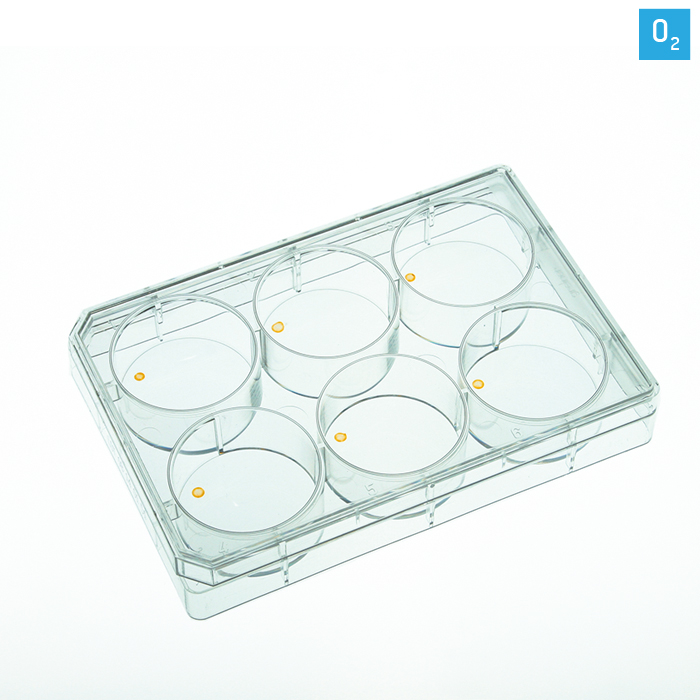Watch tutorials, webinars and informative videos about PreSens optical sensor systems.
Contactless Oxygen Monitoring in 6-Well Dish
OxoDish® OD6
This 6-well multidish has an oxygen sensor integrated at the bottom of each well. The OxoDish® is read out contactless through the transparent bottom with the SDR SensorDish® Reader. Parallel measurements in all 6 wells can be performed. The OD6 are delivered beta-irradiated and pre-calibrated.
- Ready-to-use
- Pre-calibrated
- Manual calibration possible
- Ideal for cell cultivation & tissue engineering
Applications
Process Monitoring with the SDR in Suspension-Adapted CHO Cell Cultures
Oxygen and pH kinetics of suspension-adapted CHO cells at different start concentrations were monitored. The kinetics correlated well with the initial cell concentrations. pH values decreased only to a minimum of 6.3 due to daily media change. Samples with the lowest cell concentration did not show any pH change due to lack of cell growth. The oxygen uptake rate increased at each medium change. For the highest initial cell concentration it decreased at the end of the cultivation due to forming of aggregates. The results were confirmed by microscopic investigation.
Dr. Harry Abts, Celonic GmbH, Jülich, Germany, BioProcess Int., Jan 2008: 64-66
Adaption to Oxygen Deprivation in Stem Cells
Hypoxia plays an important role in vascular development. The in vitro response of cultures of human embryonic stem cells (hESCs), induced pluripotent stem cells (iPSCs), human endothelial progenitor cells (hEPCs), and human umbilical cord vein endothelial cells (HUVECs) to normoxic and hypoxic conditions was investigated using OxoDishes®. Dissolved oxygen in the media of adherent cultures was measured with the SDR in atmospheric (21 % O2), physiological (5% O2), and hypoxic (1 % O2) conditions over a period of three days. For monitoring at low oxygen concentrations the SDR and OxoDish® were put into a sealed hypoxia chamber. Results showed that the oxygen uptake rate in all cell types was low in hypoxic conditions, demonstrating cell adaptation to lower oxygen tensions by limiting oxygen consumption.
H. E. Abaci, et al., 2010, Johns Hopkins University and Johns Hopkins Physical Science oncology Center and Institute for NanoBioTechnology, Baltimore, US
Technical
| Specification | |
|---|---|
| * in H2O dest. or oxygen-free water | |
| Measuring range | 0 - 50 % O2 |
| Resolution* | ± 0.4 % O2 |
| Precision* | ± 1 % O2 |
| Drift* | < 0.2 % O2 within one week (sampling interval 10 min.) |
| Measurement temperature | from + 15 °C to + 45 °C |
| Response time* (t90) | at + 25 °C: < 30 sec. |
| Properties | |
| Compatibility | Aqueous solutions, ethanol (max. 10 % v/v), methanol (max. 10 % v/v), pH 2 - 10 |
| Calibration | Pre-calibrated Disposables are delivered beta-irradiated |
| Maximum filling volume | 15 mL |








